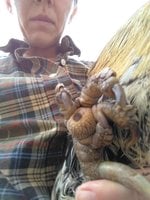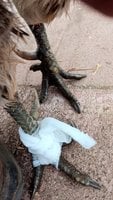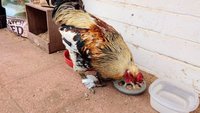AnnaCastle
Chirping
Our beautiful roo has Bumble. We only caught it this morning, he had started to limp a bit more than usual (always had a tiny limp since we got him), not like that yesterday. Bottom of right foot is swollen and warm, noticeably different from the left. I read an article on this site to treat it early by soaking in warm water and epsom salt, dry, spray with Vetrycin, bandage up, which I did. I also stuck at little square of moleskin across the scab.
My question is, how exactly is the epsom supposed to teat it at this early stage? Dry it up and shrink it? And is there anything else I can do? He's confined away from the rest of the flock. We don't want to lose him!!! Everytime time we have a really good roo he dies... Had a hen last year got it, we attempted the surgery, she ended up dying anyway. 3 pictures attached.
Anna
My question is, how exactly is the epsom supposed to teat it at this early stage? Dry it up and shrink it? And is there anything else I can do? He's confined away from the rest of the flock. We don't want to lose him!!! Everytime time we have a really good roo he dies... Had a hen last year got it, we attempted the surgery, she ended up dying anyway. 3 pictures attached.
Anna







